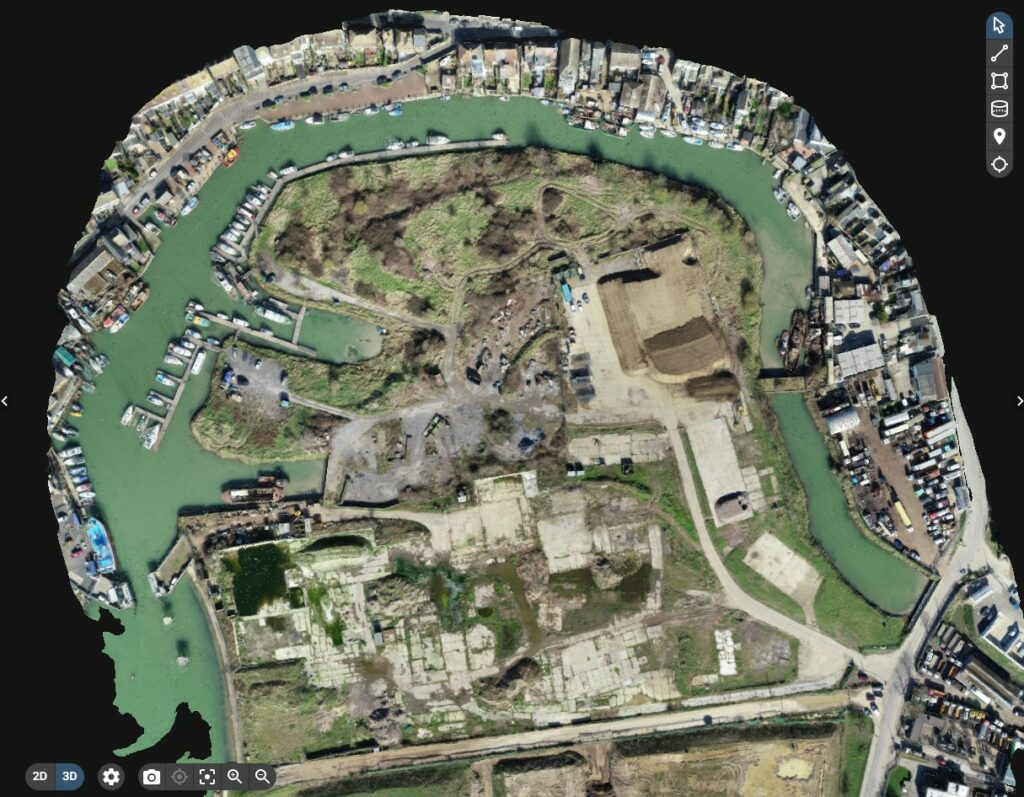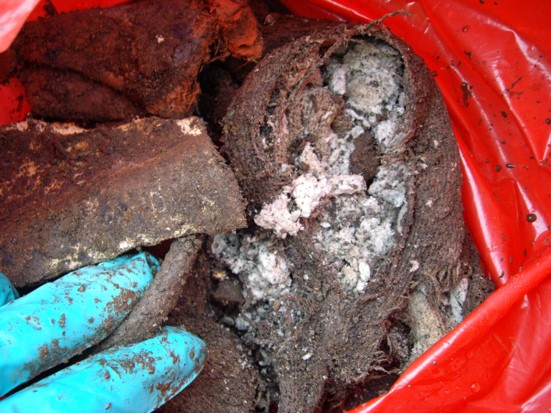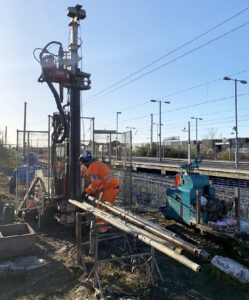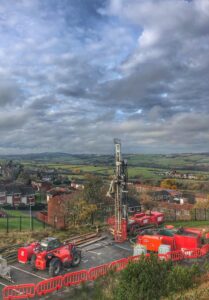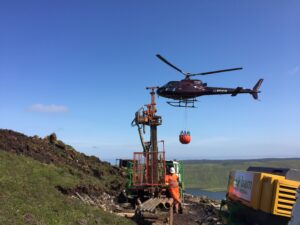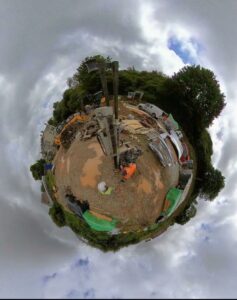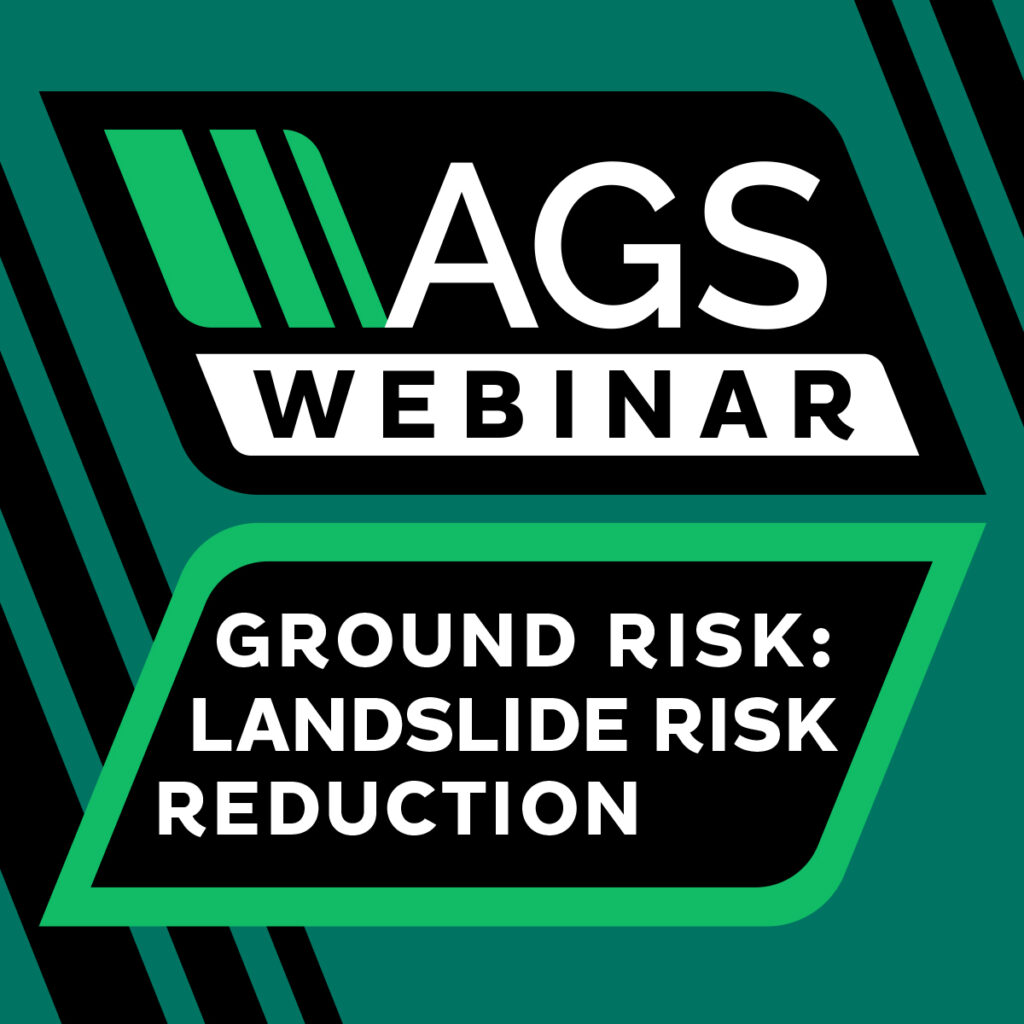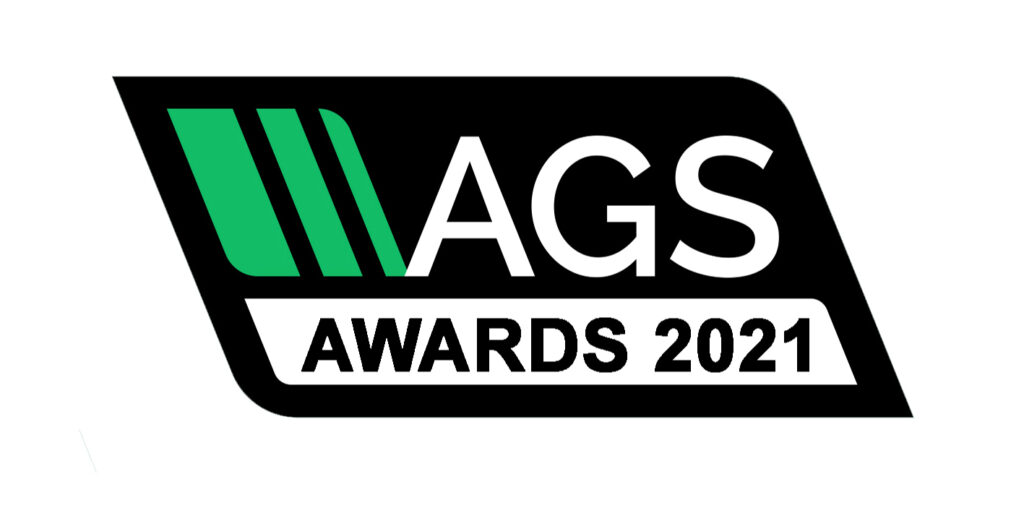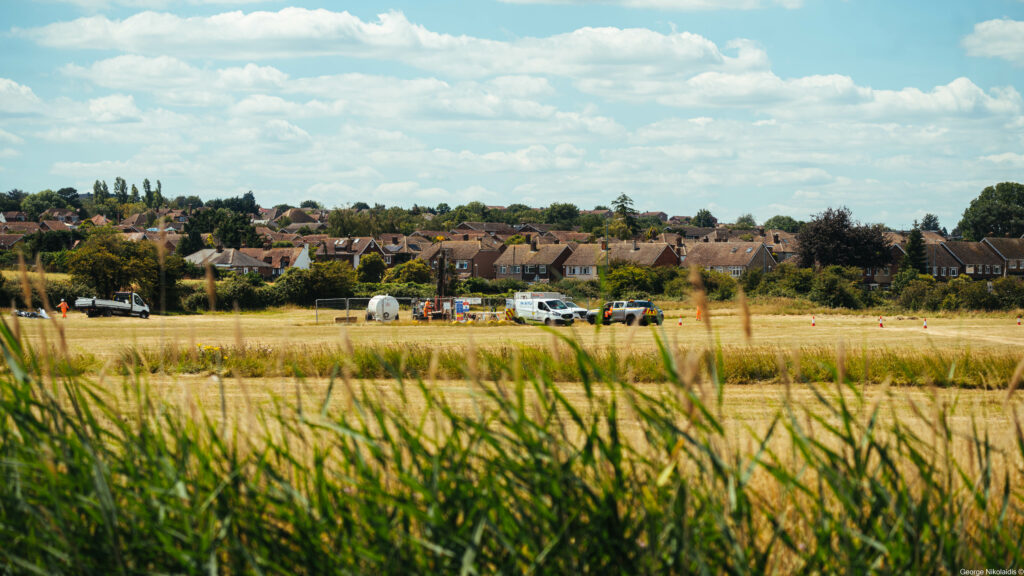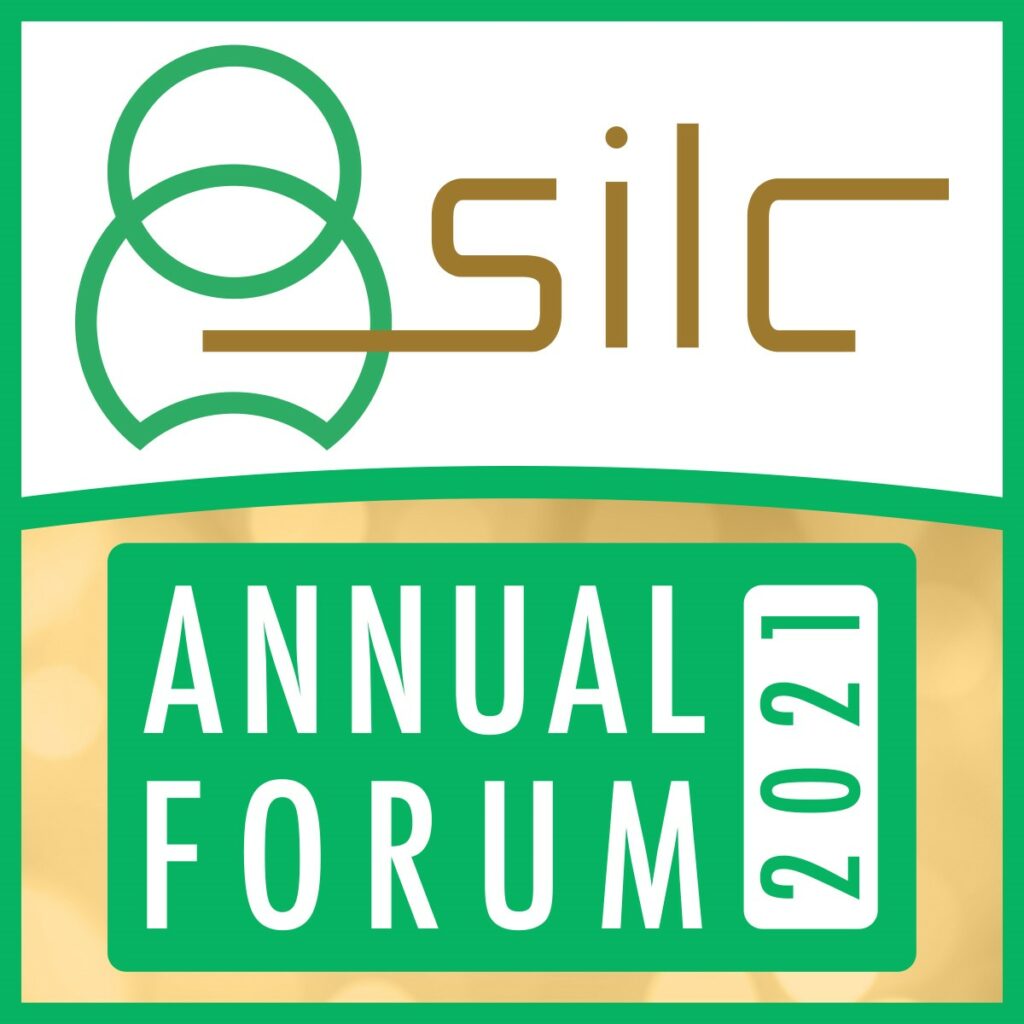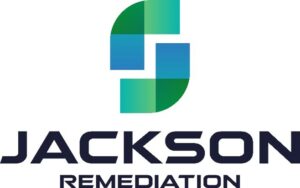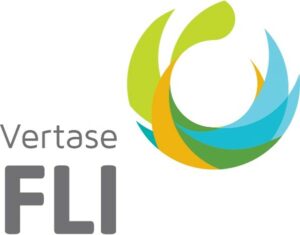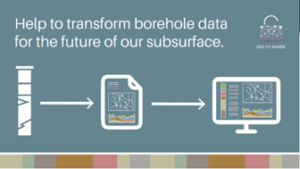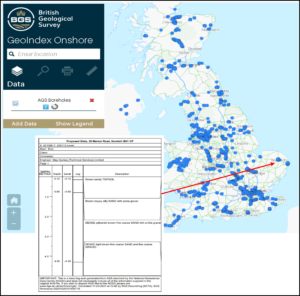Article provided by Geraint Williams, ALS Life Sciences, Member of the Contaminated Land and Laboratories Working Groups.
“Forever chemicals”. This is the ominous title often given to PFAS (per- and polyfluoroalkyl substances) which hints at both the reason for their use and their potential impact to human health and the environment. These substances are the latest entry into the list of contaminants that have resulted in long-term exposure over the last several decades. Their predecessors include lead, asbestos and hexavalent chromium, the focus of the 2000 Erin Brockovich film, plus many more. But PFAS pose many difficulties their predecessors did not. This article briefly reviews these challenges and provides an overview of emerging laboratory techniques for analysis of PFAS.
What are PFAS?
In 2015, the Swedish Chemicals Agency (KEMI) identified over 3,000 PFAS on the global market1. A more recent study identified approximately 4,700 Chemical Abstract Services (CAS) Registry Numbers associated with individual PFAS or PFAS mixtures2. In 2019, the US EPA assembled a master list of 6,330 PFAS that combines information from several existing lists into one3. The total number of PFAS may be even larger, given that some PFAS class members lack CAS numbers and many are not intentionally manufactured but are transformed in the environment.
PFAS can be broadly subdivided into four interrelated categories: perfluoroalkyl acids (PFAAs), PFAA precursors, perfluoropolyethers (PFPEs), and fluoropolymers4, 5. PFAAs are the most studied PFAS subgroup. They are recalcitrant and extremely persistent in the environment. Examples of PFAAs include perfluoroalkyl carboxylic acids (PFCAs) such as perfluorooctanoic acid (PFOA), perfluoroalkyl sulfonic acids (PFSAs) such as Perfluorooctane sulfonic acid (PFOS), perfluoroalkyl sulfinic acids (PFSiAs), perfluoroalkyl phosphonic acids (PFPAs), perfluoroalkyl phosphinic acids (PFPiAs), perfluoroether carboxylic acids (PFECAs) such as GenX, and perfluoroether sulfonic acids (PFESAs) such as 4,8-dioxa-3H-perfluorononanoate (ADONA). PFAAs and their precursors are further subdivided according to their chain length, which is viewed as indicative of their bioaccumulation potential. By convention, the longer-chain PFSAs are those with six or more perfluorinated carbons; longer-chain PFCAs, PFPAs and PFPiAs are those with seven or more perfluorinated carbons5. The definition of longer vs. shorter-chain PFAS is less clear for perfluoroethers.
The focus of risk assessment has been on a very narrow sub-set of PFAAs which are all extremely persistent and are also known to be mobile and bioaccumulative. This persistence, along with their high solubility, low to moderate sorption to soils, and lack of volatility can result in very extended groundwater plumes (potentially multiple miles). PFAS have the potential to migrate over a much wider area than conventional contaminants6.
PFAS Regulation
PFOS and its salts, and perfluorooctane sulfonil fluoride (POSF) are listed as persistent organic pollutants (POPs) in Annex B of the Stockholm Convention, whereas perfluorooctanoic acid (PFOA), its salts, and related compounds are listed in Annex A7. Perfluorohexane sulfonic acid (PFHxS), its salts, and related compounds are currently under review for listing8. Several PFAS are included in the European Chemicals Agency’s (ECHA) Registration, Evaluation, Authorisation and Restriction of Chemicals (REACH) Candidate List of Substances of Very High Concern (SVHC)9.
The EU annual average environmental quality standard (AA-EQS) for PFOS in surface freshwater is set at a very low criterion of 0.65 ng/l, based on the potential for secondary poisoning in humans due to fish consumption.
The US has set a lifetime health advisory level for PFOA and PFOS, individually or combined, of 70 ng/l in drinking water10. Several US states have also set their own drinking water guideline levels for PFOA and PFOS. Whilst in the UK, the Drinking Water Inspectorate (DWI) has recently revised our own standards11 which follow a 3-tier system where PFOS or PFOA requiring monitoring is set at 10 ng/l. The concentration requiring treatment, as representing a potential danger to human health is set at 100 ng/l for PFOS and PFOA and the concentration at which exposure from drinking water should be reduced within 7 days is set at 1 µg/l.
Toxicology
The toxicology of PFAAs is evolving, but questions remain unanswered about the potential adverse health outcomes, though some are shown in the 2019 film Dark Waters12. Potential adverse human health effects and risk factors from longer-chain PFAA exposure include increased serum cholesterol13, thyroid disease, immune dysregulation, pregnancy-induced hypertension, and kidney and testicular cancers. Other studies have found positive correlations between long-chain PFAA exposure and low birth weight in humans, as well as suppressed immune system response, dyslipidemia and impaired kidney function.
The European Food Standards Agency (EFSA) set a new tolerable weekly intake (TWI) of 4.4 ng/kg/bw/pw. Their opinion focused on the sum of four PFAS: PFOA, PFOS, pefluorononanoic acid (PFNA) and PFHxS14.
When some major manufacturers phased out the production of long-chain legacy PFAS, most industries turned to structurally similar replacements including homologues with fewer fluorinated carbons or other less well known PFAS e.g. per- and polyfluoroalkyl ether-based substances. These replacement PFAS were marketed by producers as safer alternatives because of their presumed lower toxicity and lower level of bioaccumulation. There are, however, several studies and growing evidence to suggest that certain replacement PFAS have become regrettable substitutes15.
Less is known about the thousands of polyfluorinated PFAAs precursors, which can transform in the environment through multiple intermediates to ultimately create PFAAs as end-products. Intermediate transformation products include the 6:2 fluorotelomer sulphonate (6:2 FTS) and 5:3 fluorotelomer carboxylic acid (5:3 FTCA) which are described to bioaccumulate in marine invertebrates and rats respectively, and the final transformation products, the short chain PFAAs are shown concentrating in crops 16, 17.
Conceptual Site Models
A robust, site specific Conceptual Site Model (CSM) remains the basis for assessing potential risks. It is necessary to have a detailed understanding of the topography, geology, hydrology and hydrogeology for all sites. In addition, knowledge of the types, properties and fate and transport of PFAS along with biotransformation of precursors are all crucial aspects in conceptualising PFAS sources, pathways and receptors.
Because short-chain perfluoroalkyl substances have, to a large extent replaced the long-chain PFAS, the levels of short-chain PFAS such as perfluorobutanoic acid (PFBA), perfluorobutane sulfonic acid (PFBS) and perfluorohexanoic acid (PFHxA), have increased in environmental media. Short-chain PFAAs are very soluble in water and therefore might represent even more of a risk to drinking water as a result of groundwater contamination. The shorter chain PFAAs generally have lower organic carbon partitioning co-efficients than longer chain compounds.
The potential presence of PFAS should be taken into account during the preliminary investigation stage. No direct reference is made to PFAS in the former Department of Environment Industry Profiles, which were written before there was increased awareness of these contaminants, however PFAS might be present at a range of sites including where they are primarily manufactured or have been used in the processing of related products.
The major industries and applications are summarised below:
- Aviation and aerospace (military and civil airfields)
- Carpet manufacturing
- Chemical works (cosmetic/personal care products)
- Chrome Plating sites
- Electronics manufacturing
- Firefighting – class B firefighting foams (fire training area/fire stations)
- Landfills
- Military bases
- Paper and cardboard manufacturing
- Petrochemical industry
- PFAS production
- Photolithography and semiconductor lithography
- Textiles and leather manufacturing
- Wastewater treatment works
This list is not intended to be exhaustive.
While PFAS sources are varied, the release of aqueous film forming foam (AFFF) is a common source of PFAS contamination at airports, military bases and major oil and gas facilities. It is these types of sites that are subject to most investigation currently in the UK. The combination of complex AFFF compositions and numerous types of foams used throughout decades of fire training, equipment testing and emergency response scenarios has resulted in highly diverse mixtures of PFAS being present in the subsurface.
Perfluoroalkyl sulphonates tend to sorb more strongly than perfluoroalkyl carboxylates of equivalent perfluoroalkyl chain length. Sorption of PFAS can also be influenced by the presence of co-contaminants such as nonaqueous phase liquids and nonfluorinated surfactants, which typically increase sorption potential to soils17.
PFAS can readily penetrate the concrete pad at fire training areas. PFAS self-assemble on concrete surfaces which are relatively porous. They then act as a long-term source of contamination in run-off and drainage.
The presence of cationic and zwitterionic precursors in many Class B firefighting foams could act as an on-going source of the more frequently regulated and measured PFAAs such as PFOS, PFHxS and PFOA. These precursors are incompletely extracted from soils by current analytical techniques essentially developed for anionic PFAS (see below). The cationic and zwitterionic classes can contribute up to 97% of the total PFAS mass especially in source zones soils18.
The analytical challenges and emerging techniques
PFAS are also challenging contaminants because most constituents cannot be detected by conventional analytical techniques. Conventional methods used by UK laboratories allow for the analysis of around 20 different compounds. There are, however, many more PFAS which will be left undetermined including a significant number of polyfluoroalkyl substances.
PFAS are primarily analysed by liquid chromatography coupled with tandem mass spectrometry (LC-MS/MS). Water samples are extracted using solid phase extraction (SPE) and soils extracted with methanol. As a “targeted” analytical technique, the results are limited to a fixed suite of components. In other words, the results do not provide a comprehensive measure of the total extent of PFAS that may exist, nor does this approach measure the potential for targeted PFAS formation due to transformation of precursors over time.
In order to identify the presence of precursors, TOP assay (total oxidisable precursors) was developed. Sample preparation follows the same procedures as are traditionally used for targeted LC-MS/MS analysis. TOP assay converts precursors in a sample which are detectable by routine analysis. Results are provided both pre and post digest. The assay includes steps to oxidise PFAAs precursors using heat and alkaline activated persulfate. During the oxidation process, the assay generates an excess of hydroxyl radicals to convert these compounds. TOP assay is widely available and has been used to estimate the concentration of PFAS which contain a detectable perfluoroalkyl group. It is the most selective of PFAS surrogate analytical methods, in that it determines compounds that can be oxidised to form targeted PFAAs.
More recently, there has been increasing focus to develop and validate complementary screening tools that provide a comprehensive measure of total PFAS impact. This has resulted in several methods for analysing Total Organic Fluorine (TOF) as a proxy for total PFAS contamination. TOF is determined by Combustion Ion Chromatography (CIC) and measures extractable or adsorbable organofluorine in a range of matrices.
The concept of a “PFAS screening tool” approach is being evaluated by the US EPA, which is in the process of developing a new analytical method for measuring TOF in environmental samples. The USEPA TOF method is anticipated to be published later this year. TOF analysis could be useful to use along side existing approaches although there is a trade-off between selectivity and inclusivity.
In addition, there have been recent advances in High Resolution Mass Spectrometry (HRMS) such as LC- Quadrupole time-of-flight mass spectrometry (LC-qTOF/MS) and Orbitrap techniques which can be used to determine both the chemical formula and structure of unknown PFAS. These method have the potential to greatly increase the number of identified PFAS compounds and provide more accurate source identification. HRMS is best suited for samples in which unknown PFAS are likely to be present in significant concentrations. LC-qTOF/MS or other HRMS techniques give a more detailed understanding especially where chain-length specific concentrations are required.
Conclusions
As the transformation of precursors to PFAAs can have important implications for risk assessment, understanding their relative contribution to total PFAS concentrations is critical to determining the remediation options for impacted sites. A robust and reliable CSM is required and techniques such as TOP assay have role to play.
Only a small fraction of known PFAS can been measured via targeted chemical analysis and many more PFAS are likely to occur in the environment than are routinely analysed.
PFAS are used in a wide range of applications and typically occur in complex mixtures which present a unique challenge to laboratories. In contrast, there is a very limited number of laboratory standards available.
The more we learn about PFAS contamination, we realise that the problem is more widespread than previously thought. The requirement to investigate much larger areas may become a necessity with better understanding of CSMs. Non-targeted PFAS analysis could be used to screen extensive areas, identifying hot spots of contamination directing efforts for parts of the site that require further investigation and characterisation with targeted and traditional analytical methods.
Use of TOP assay in combination with other less selective methods like TOF may become a popular approach to gain additional information about the nature of the unidentified fluorine fraction and its relevance as a source of PFAAs. The addition of HRMS for non-targeted and suspect screening analyses can offer valuable information about the unidentified fraction of organic fluorine.
References
- KEMI (Swedish Chemicals Agency). 2015. Occurrence and use of highly fluorinated substances and alternatives. Report from a government assignment. Swedish Chemicals Agency (KEMI) Stockholm, Sweden
- OECD. 2018. Toward a New Comprehensive Global Database of Per- and Polyfluoroalkyl Substances (PFASs): Summary Report on Updating the OECD 2007 List of Per- and Polyfluoroalkyl Substances (PFASs). Series on Risk Management No. 39. ENV/JM/MONO(2018)7. Paris, France: OECD.
- U.S. EPA. 2020b. PFAS Master List of PFAS Substances (Version 2).
- Wang Z, DeWitt JC, Higgins CP, Cousins IT. 2017. A never-ending story of per- and polyfluoroalkyl substances (PFASs)? Environ Sci Technol 51(5):2508–2518.
- Buck RC, Franklin J, Berger U, Conder JM, Cousins IT, de Voogt P, et al. 2011. Perfluoroalkyl and polyfluoroalkyl substances in the environment: terminology, classification, and origins. Integr Environ Assess Manag 7(4):513–541.
- Ross I., Donough J., Mile J., Storch P., Kochunarayanan T., Kalve E., Hurst J., Dasgupta S., Burdick J. A review of emerging technologies for remediation of PFASs Remediation 2018: 28 101-126.
- UNEP (United Nations Environment Programme). 2020. All POPs listed in the Stockholm Convention.
- POPRC (Persistent Organic Pollutants Review Committee). 2020. POPRC recommendations for listing chemicals.
- ECHA (European Chemicals Agency). 2020. Candidate list of substances of very high concern for authorisation.
- U.S. EPA (U.S. Environmental Protection Agency). 2020a. Drinking water health advisories for PFOA and PFOS.
- Drinking Water Inspectorate (2021) Guidance on the Water Supply (Water Quality) Regulations 2016 (as amended) specific to PFOS (perfluorooctane sulphonate) and PFOA (perfluorooctanoic acid) concentrations in drinking water.
- C8 Science Panel. 2012b. Probable link evaluation of thyroid disease. 30 July 2012.
- Skuladottir M, Ramel A, Rytter D, Haug LS, Sabaredzovic A, Bech BH, et al. 2015. Examining confounding by diet in the association between perfluoroalkyl acids and serum cholesterol in pregnancy. Environ Res 143(pt A):33–38, PMID: 26432473, 10.1016/j.envres.2015.09.001.
- EFSA (2020) Risk to human health related to the presence of perfluoroalkyl substances in food
- Brendel S, Fetter É, Staude C, Vierke L, Biegel-Engler A. 2018. Short-chain perfluoroalkyl acids: environmental concerns and a regulatory strategy under REACH. Environ Sci Eur 30(1):9, PMID: 29527446, 10.1186/s12302-018-0134-4.
- Caverly Rae, J. M.; Craig, L.; Slone, T. W.; Frame, S. R.; Buxton, L. W.; Kennedy, G. L. Evaluation of chronic toxicity and carcinogenicity of ammonium 2,3,3,3-tetrafluoro-2-(heptafluoropropoxy)- propanoate in Sprague-Dawley rats. Toxicol Rep 2015, 2, 939− 949.
- Langburg, H. A., Breedveld G.D., Gronning H. M., Kvennas M., Jenssen B.M, Hale S. Bioaccumulation of Fluorotelomer Sulfonates and Perfluoroaklyl Acids in Marine Organisms Living in Aqueous Film-Forming Foam Impacted Waters
- Guelfo, J. L., & Higgins, C. P. (2013). Subsurface transport potential of perfluoroalkyl acids at aqueous film-forming foam (AFFF)-impacted sites. Environmental Science & Technology, 47(9)
- Nickerson A., Maizel A.C., Poonam R., Kulkarni R., Adamson D.T., Kornuc J.J., Higgins C.P. Enhanced Extraction of AFFF-Associated PFASs from Source Zone Soils. Environ Sci. Technol. 2020 54 4952-4962
